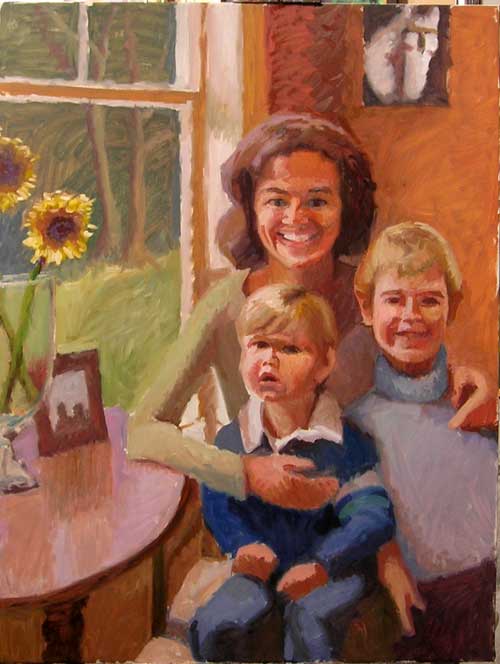The Lay-in
So the canvas is ready. You put out your paint. Now what? How and where do you begin? It’s time for the lay-in, or block in. It’s the term used for the first round of paint to go on the canvas
I try simplify the image as best I can to start with. No amount of subtlety is going to save a portrait is the eyes are in the wrong spot, or the ears are too big. I start with the values, or the relative light or darkness of one thing compared to another. An area of the canvas is selected, and you make your best guess on what color to use. Every spot of paint is going to look too dark and too intense on a white canvas. That’s because your eye need the other spots of color around it to make comparisons. These first few swatches of color are generalized values and colors. You’re looking for a balance that looks similar to that which you observe in your reference photos or in your sitter if you are working form a live model.
This job of comparison is really at the heart of the entire painting process. The values in one small area need to balance against the values that surround it. They also need to balance against the values though out the the painting a whole. This is your task for the first day. Keep comparing one value against another, until the entire canvas is covered. Then go back and compare on section of the picture to the whole.
The image you see above is the result of one long day of work. At 34″x45″, it’s a lot of canvas to cover! My thoughts were all about values as I laid brush to canvas. If I could get the color and value right at the same time, that’s great, but I will most likely have to revisit and repaint the entire surface a couple of times before the painting is complete.
This stage is also time to check in on the composition. Again it’s looking at things as a whole picture. Something that looked good in gouache, and good in charcoal may not look right once I see it in full color paint up on the canvas. That’s why it is so important the entire surface be covered as quickly as possible.
One of the phrases that was repeated time and again when I was in art school was, “Painting is a series of corrections.” It’s true. The craft of traditional portrait painting is real the act of making your best choice at any one moment, and then seeing how it compares to everything else. I will keep you posted as my series of corrections continues.




